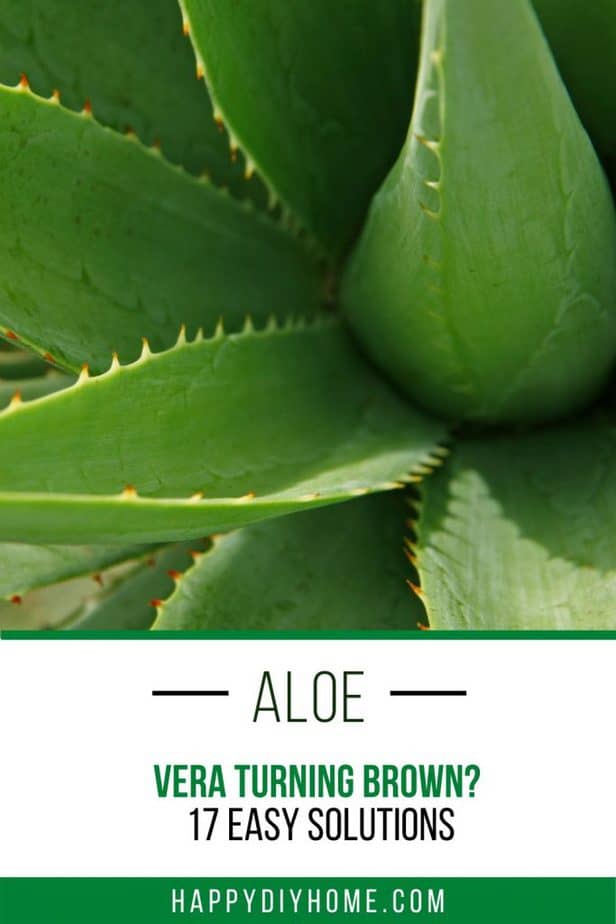why is my aloe turning brown
Aloe vera plants are one of the easiest and most beneficial plants to keep in or around your home. Not only are they simple to care for, but they also offer many health benefits, such as the acceleration of burn heals, prevention of wrinkles, dental plaque reduction- and that’s only the tip of the iceberg.I had a few of these plants while growing up, and I was always breaking off stems and soothing my scrapes from playing in the backyard. Even as a kid, I knew their benefits were helpful!Reading: why is my aloe turning brownThese plants require minimal care, as they are grown as succulents. Though the steps for success seem easy, maintaining proper care is how you’re going to prevent your aloe vera turning brown. Some of the most common reasons for browning on your plant include:
- Excessive heat or cooling
- Over or underwatering
- Disease
- Pests
- Salt buildup in the fertilizer
- Too little light
- Too hot
- Stress
- Shock
- Root rot
- Brown and soft leaves
- Yellow leaves
- Bending leaves
- Sticky residue
- Leaves turning curly, flat, and thin
- Floppy or drooping
- Leggy growth
Aloe vera y perejil by Olga Berrios / CC BY 2.0 There are dozens of reasons why your aloe plant isn’t doing as well as you’d like it to, and we’re going to break them down for you below.
Heat and Cooling
Contents
Don’t be confused, this particular plant is not a type of cactus. However, they are a desert plant which means they thrive in sand and fertilizer that drains water and dries quickly. With cooler, wet temperatures, you’ll find your aloe vera turning brown
What’s the Ideal Temperature?
The most comfortable temperature for growth rate is anywhere between 55 and 75 degrees Fahrenheit (12 and 23 degrees Celsius), making the average room temperature desirable for your indoor succulent.
Keep Out of Direct Sunlight!
Did you know that placing your plant in direct sunlight can actually cause sunburn? Instead of placing it directly in your window sill, try in the middle of the room like on a coffee table or your kitchen island. Sunburn will have your aloe vera turning brown and red, that’s when you know it’s time to relocate. As long as your succulent receives bright light while not directly basking in it, you’re guaranteed a happy plant without those brown, crisp tips.
Over and Underwatering
One of the number one causes of an aloe vera turning brown has to deal with water issues.How can you tell if you’ve been overwatering your plant? You can notice soft spots that appear soggy on the leaves. If the overwatering continues, the entire leaf will begin to discolor, stay soggy, and eventually turn brown.
How Can I Save My Drowning Plant?
To prevent your plant from falling apart, it is recommended to replant in soil that quickly drains, and removes any roots that suffered from rotting damage. When it comes the time to water, be sure the soil is completely dry. Watering once a week is typical upkeep, with even less care in the winter while dormant.
Oh No! I Forgot To Water My Plant Again…
For some of us, like myself, it’s easy to forget to water your plants. While this is a great plant to have for us with forgetfulness, an aloe vera turning brown is an obvious way to see that your plant is lacking the T.L.C. it requires.Your plant will begin to appear to have shriveled, hard, and shrunken leaves. Solving your underwatering solution, however, is much easier than overwatering. Nurse your succulent back to life by providing enough water until it begins to run out of the holes at the bottom of the pot. Wait for the soil to completely dry, and repeat until your leaves are a healthy green again.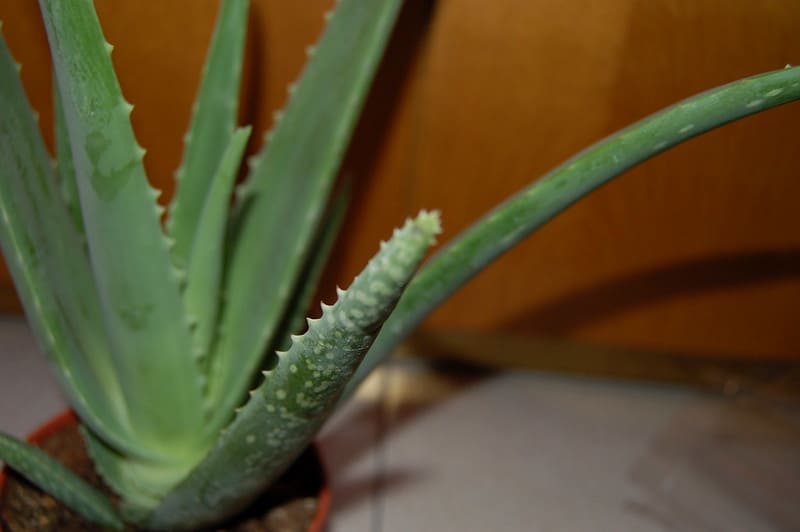
Disease
One reason you may be experiencing your aloe vera turning brown is the cause of a disease. There a few different diseases related to the plant, including:
- Aloe Rust
- Anthracnose Disease
- Basal Stem Rot
- Bacterial Soft Rot
Aloe Rust
This is a fungal disease which causes black and dark brown, spots along leaves, ultimately leaving your aloe vera turning brown. The exposed blackened area oxidizes, and does not cause further discoloration. Prevention is the best control, as the disease can spread to nearby cultivated plants.
Anthracnose Disease
Similar to aloe rust, this fungal disease causes reddish brown/normal brown spotting on the leaves.
Basal Stem Rot
Stem rot is the result of wet and/or cold conditions, including overwatering. You may not at first notice your aloe vera turning brown, as the base of the plant is first affected, resulting in rotting roots/stems. The affected tissue rots into a black or reddish brown color.
Bacterial Soft Rot
Soft rot is a bacterial disease, leaving mushy, water-soaked leaves behind, and eventually collapsing the succulent whilst your aloe vera turns brown. These spots may spread and merge together. Your plant may be more susceptible to soft rot if the base of the rot starts at the crown.
How Can I Cure These Diseases?
Though slightly different, each of these shares a common threat- the rotting of leaves or roots. Your succulent leaves will vary in color, some starting yellow or dark green, progressively causing your aloe vera to have turned brown as the disease harms your plant.Start with the proper succulent treatment- temperature and water control. Avoid shadows and cooler rooms, and remember to water only as much as needed. Where necessary, snip off the rotten leaves or roots and continue treatment like normal.
Pests
Read more: why does my phone say restricted when i call someoneThis particular plant may not seem desirable for most insects, however, there are a few that enjoy its sticky pulp. Aphids, mealybugs, fungus gnats, flies, and mites are the most harmful, causing infestation on the leaves, and black mildew as a result of feeding. If not treated properly, these insects can be lethal to your plant.
These Bugs are So Small, How Do I Know They’re There?
Be sure to inspect your plant! Whether you’re walking by and notice your aloe vera turning brown or black, or taking time to water, be sure to look out for unusual behavior. If your plant suddenly has a cotton-like nest or an abnormal growth, chances are that pests are beginning to take over.
How Can I Fight Back?
Start by separating the brown, infected leaves from the healthy ones. Squirt water onto the pests and colonies and remove them with a q-tip or soft cloth. You can also use rubbing alcohol, but be sure to completely remove it off of the leaves with water when finished. You may have rid the bugs, but the alcohol would then be detrimental.
Will My Plant Heal from Pest Damage?
Unfortunately, your plant may have suffered in its battle-of-the-bugs. Depending on the insect you’re dealing with, there’s a chance they might have permanently damaged the leaves they were feeding on. Break off and rid of the aloe vera leaves that turned brown/have been affected after ridding the pests. At this point, it’s best to discard any damage they’ve done and repot your plant with a fresh start.
Salt Buildup in the Fertilizer
These succulents are naturally adapted to dry, poor soils, as they are desert plants. Too much of a good fertilizer can harm your plant, as well as feeding. Being a succulent means minimal care. In this case, the less attention, the better.
What Will Too Much Salt Cause?
Having a fertilizer with excess salt can actually burn the roots of your succulent, and brown the leaves resulting in “tip burn”. In a worst-case scenario, it’s best to replant in brand new, less detrimental soil, and completely flush out the salt with water before feeding.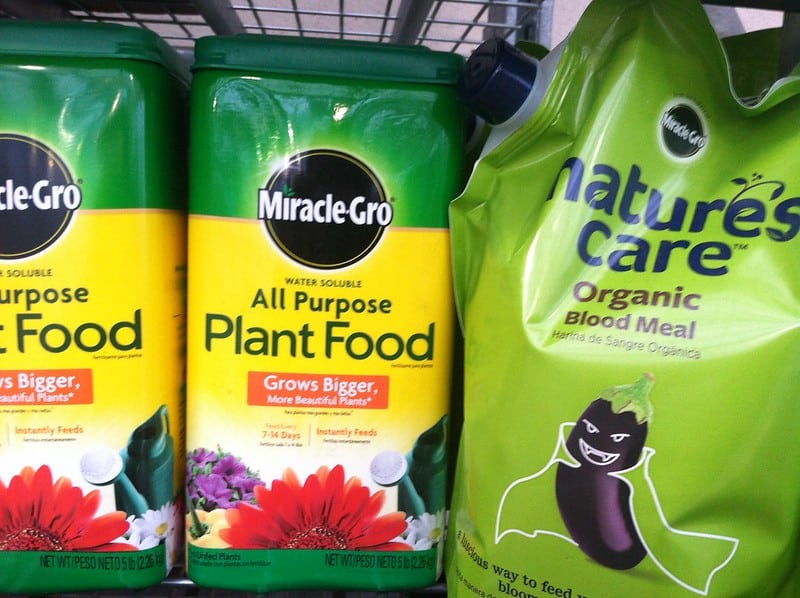
The Lesser, The Better
Everybody knows that succulents are some of the best plants to have around, especially considering aloe vera because of its wonderful health benefits and easy-to-care-for nature. When properly cared for, these spiky friends can last a long time and grow tremendously in size.
Too Little Light
It can be easy to give your aloe too much light, but it’s also possible to stick it in an area that doesn’t get enough light. It’s not a low-light houseplant, but it can’t stand directly light either as we outlined above. A lack of light will cause your plant to weaken. You may notice that the leaves are starting to bend or crease at the base of the plant or in the middle. Pale leaves or a leggy growth habit are two other indicators that your plant isn’t getting enough light.
Solution:
Place your plant near a sunny window. If it’s not sunny, you can try putting it right in the window. However, hot exposure from a west or south-facing window will sunburn the plant and cause damage. During the darker, cooler winter months, you might have to move your plant into a much brighter spot so it gets enough light to grow. Every two to three months, make a point to rotate your plant to make sure each side gets an even amount of sunlight. This can prevent the plant from leaning toward the light one way.
Too Hot
Even though almost every succulent links medium to high light when you grow them inside, being right up against a hot glass will cause the leaves to burn. Because aloe and other succulents have a higher liquid content in the leaves, this can lead to sunburn. If you notice very large brown patches spreading over the leaves that are slowly turning an orangish-brown color, your plant is getting way too much sun.
Solution:
Immediately move your plant away or out of the hot window with direct sunlight. In a south or west-facing window, exposure is fine. However, set it back away from the window so the glass isn’t magnifying the sun more and causing sunburn. Another option is to hang a sheer curtain up, but you still want to slide your plant back.
Stress
You’ve most likely seen aloe plants for sale in big-box stores under low lighting conditions. There’s also a good chance that these plants have been under or over-watered, depending on how long they’ve sat on the shelves. I know many people like to shop at Trader Joe’s, and the same thing applies to any aloe plants here. They sit crammed into shelves with other succulents in pots with little or no drainage. Being kept too wet, too dry, or not in enough light will slowly weaken the plant. If it’s been stressed out for too long, the plant can die.
Solution:
When you pick out a plant from a store instead of a nursery, browse until you find a healthy plant. If the plant has yellow leaves with brown spots or if the leaves are bending, these are signs of stress. Pass by them and find a healthier one.
Shock
What could make your aloe plant turn grey? These plants turn an unhealthy shade of grey when they go into shock. This will happen especially when there is a big change in their environment. One example is moving them outdoors and exposing them to a drastic sunlight change. Although these plants can survive in the sun, you need to slowly harden them off before you move them out into the sun.
Solution:
Start the process by slowly acclimatizing your plants by giving them a small amount of sunlight and shade adjustment before you move them out into the hot sunlight. Otherwise, you run the very real risk of sunburning your plant. If you do, move it to the shade for a few days to allow it to recover before moving it back out. If you move it inside, set it in a sunny window before slowly moving it into more shade.
Root Rot
Mushy roots and leaves on your plant are an indication that you’re overwatering and the roots are starting to rot. This is a bacterial infection that causes your aloe to form water soaked spots. As the roots decay, it’ll escalate through the plants’ interior before the leaves get mushy and start to collapse.So, you should water your aloe when the potting soil is almost completely dry during the summer months. Don’t allow the plant or drainage saucer to fill up with water, and make sure that your potting soil is one that has good drainage to it.
Solution:
It’s difficult to bring your plant back once it reaches this point, but you can try by repotting it if you catch the disease very early. Put them into a sterile potting soil that is barely moist because this will help dry out the plant to prevent further attacks on the roots.You can also use hydrogen peroxide to kill the root rot. Mix around two teaspoons of 35% hydrogen peroxide into a gallon of water and pour a small amount around the base and the roots of your plant each time you water it. The peroxide will kill the bacterial lingering around the plant’s roots and help aerate the potting soil to prevent root rot from reoccurring.
Brown and Soft Leaves
Read more: Why would i switch out a dime for a pennyThere are several reasons why your plant could turn soft and brown, as we’ve outlined so far. Too much water is never good for this plant, and you should practice solid watering habits to keep it healthy. Doing so will ensure that you keep the moisture levels correct in the soil to avoid bigger problems. Brown stalks could also be natural. New growth on the aloe plant with the older leaves starting to turn yellow is nothing to worry about.
Solution:
If it’s a natural process and your plant needs to shed the older leaves to make room for new growth, you don’t have to do anything. You can cut the brown tips off your plant using a sterilized pruning shear or knife to help keep the plant healthy and green.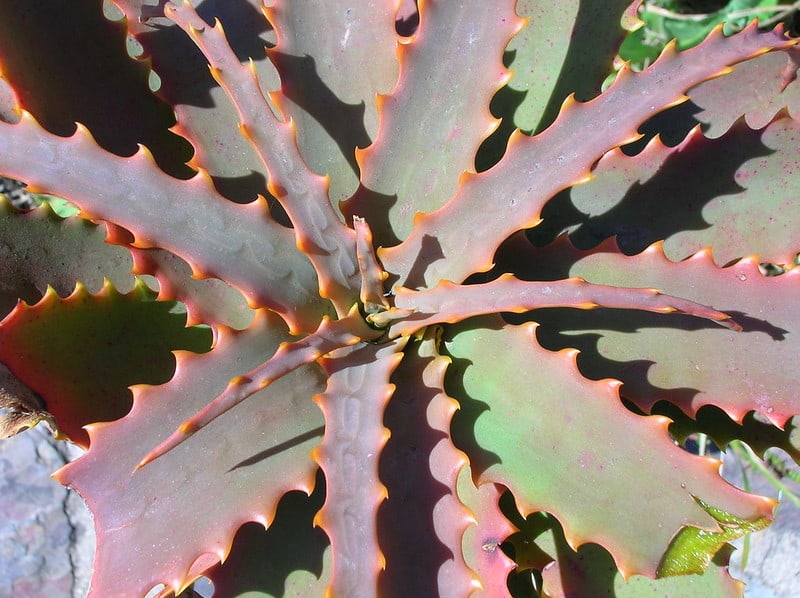
Yellow Leaves
There are also several causes why your aloe plant’s leaves could be turning yellow. The most common reason is improper watering. When you overwater your plant, the potting medium will start to stay damp all of the time to create excellent conditions for diseases and bacteria to thrive. The disease will eventually progress to damage the roots, and this prevents it from absorbing enough nutrients. In turn, your plant will have a deficiency and yellowing of the leaves. Not watering your plant enough is also a problem.
Solution:
You have to figure out which is the main cause of the yellow leaves before you can treat it. If it’s too much watering, you will cut back and allow the soil to dry out. If you’re not watering enough, you’ll have to make a point to give your plant more water. Check the temperatures, lighting conditions, and nutritional supplements and see if any of these problems solve it.
Bending Leaves
When the leaves start to bend either in the middle of the plant or at the base, it’s a good indicator that the plant isn’t getting enough light. Aloe likes to have at least six hours of sunlight that is natural and bright every day to encourage healthy growth. A lack of light will lead to a weak plant with creased or bent leaves that will continue to get weaker as time goes on.
Solution:
There are several solutions to this problem, including moving your potted plant to a brighter spot. This is especially important during the cold, dark winter months to ensure they get enough light to thrive. Put your aloe near a sunny window and rotate the plant every two weeks to make sure that you get enough light for your plant on all sides. If the light isn’t good enough, you can install grow lights. Suspend the bright lights between 6 and 12 inches above the plants for the best results.
Sticky Residue
When you expose your plant to chemical residues or grow it under a sappy plant, it would be sticky. However, this isn’t the only reason that the leaves could be sticky. Scales, mealybugs, and aphids can all make a home in your aloe plant and leave honeydew secretions on the leaves to create a film.
Solution:
If your plant has sticky leaves, it’s time to take a look at the underside of the leaves to rule out any pest infestations. Once you find out what is causing the stickiness, you can take the correct treatment measures. For example, if it comes from a chemical residual, you want to rinse it off using clean water. If the problem is pests or insects, treat it with neem oil or horticultural soap. These are non-toxic, effective treatments.
Leaves Turning Curly, Flat, and Thin
Your plant’s leaves should grow upwards away from your plant’s base. So, if your plant has flat leaves, it could be because there isn’t enough light. If the leaves get curly and thin, this tells you that the moisture levels are too low and the plants are dry. This will force your plants to use their liquids to stay nourished.
Solution:
If the problem is not enough sunlight, move it to a space that gets at least six hours of indirect light a day. If the problem is not enough moisture, get your plant on a more consistent watering level to help ensure the soil keeps the moisture levels consistent.
Floppy or Drooping Structure
A floppy aloe vera plant can be due to several different reasons, including cold temperatures, fungal infections, poor watering practices, inadequate sunlight, or a shallow pot or container. You have to narrow down what is causing the plant to be floppy or droopy before you can treat it
Solution:
Make sure that your plant gets at least six hours of direct, strong sunlight during the day. Exercise good watering practices and water when the soil is completely dry to wet it entirely. Report your aloe in a deeper, heavy, and sturdy container with full support. If you still have a droopy plant after all of this, you could have it in too large of a container. Repot it and give it a stake for support.
Leggy Appearance
Just like flat or bending aloe leaves, a plant that is spindly, leggy, or wobbly is a good indication that it isn’t getting enough light each day. You could have put your plant in a dull spot where it’s not getting enough direct sunlight.
Solution:
If this is the problem, you could try moving your plant to a sunny spot and monitor it. It’s also a good idea to keep repotting your aloe if it outgrows the container it’s currently in.
Frequently Asked Questions
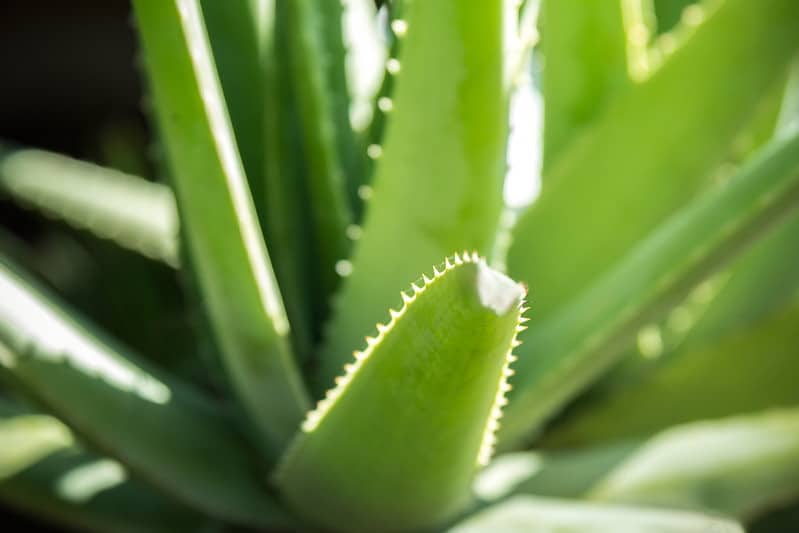

Last, Wallx.net sent you details about the topic “why is my aloe turning brown❤️️”.Hope with useful information that the article “why is my aloe turning brown” It will help readers to be more interested in “why is my aloe turning brown [ ❤️️❤️️ ]”.
Posts “why is my aloe turning brown” posted by on 2021-09-10 18:35:04. Thank you for reading the article at wallx.net
